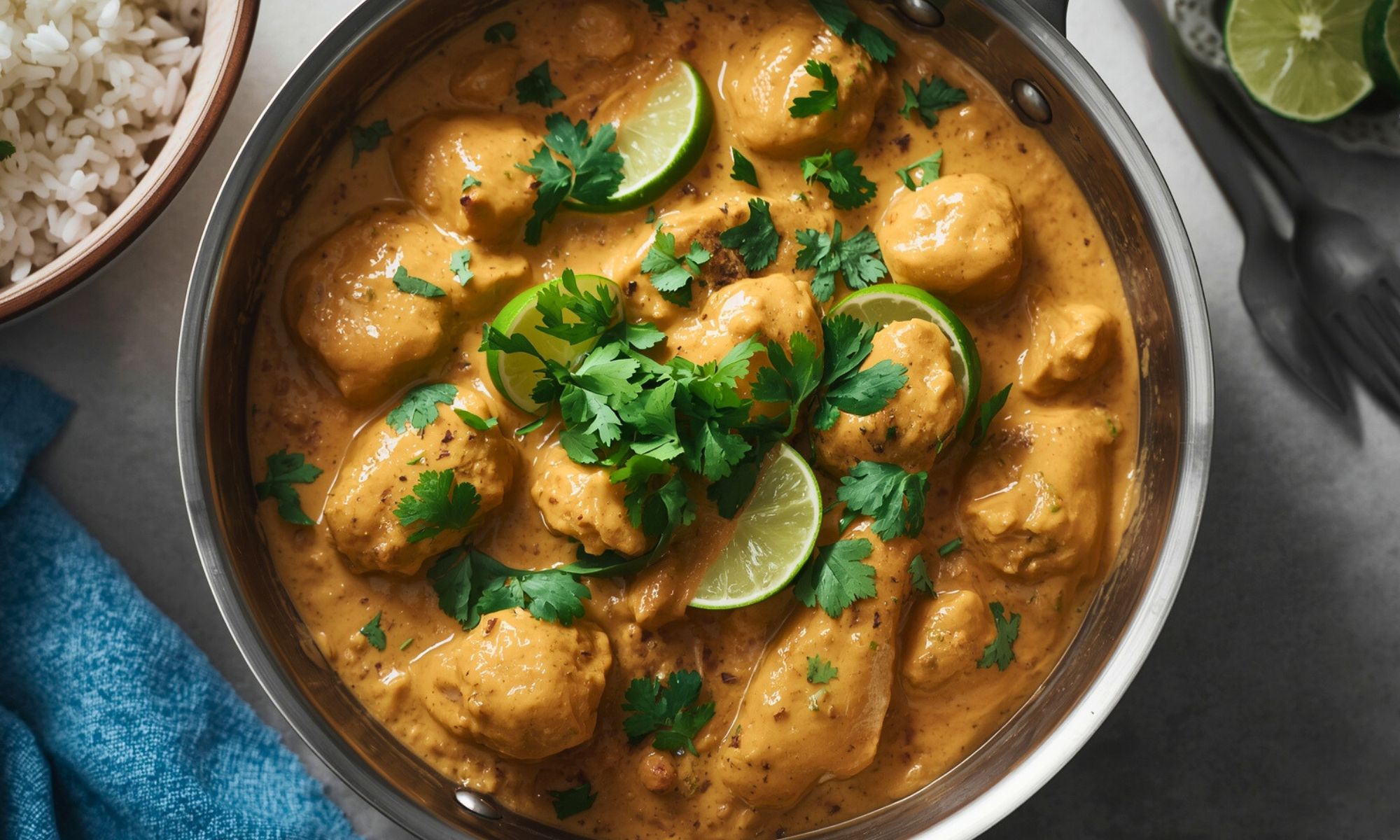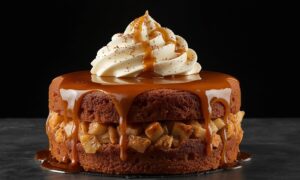Here’s something nobody tells you about Tuesday nights: the moment you master this coconut cream chicken curry skillet, your family will never let you make anything else. I discovered this three months ago when desperation met inspiration in my kitchen, and now I’ve got neighbors texting me at 5 PM asking what smells so incredible.
This coconut cream chicken curry skillet isn’t just another recipe, it’s your escape from the takeout trap. Twenty five minutes, one pan, ingredients you can pronounce. The kind of dish that makes people think you’ve been cooking all day when you’ve barely broken a sweat.
The magic happens when rich coconut cream meets perfectly seared chicken and warm, aromatic spices. Everything builds layer by layer in that same skillet, creating a sauce so good you’ll want to drink it straight from the pan. Don’t judge, we’ve all been there.
What Makes This Coconut Cream Chicken Curry Skillet Revolutionary
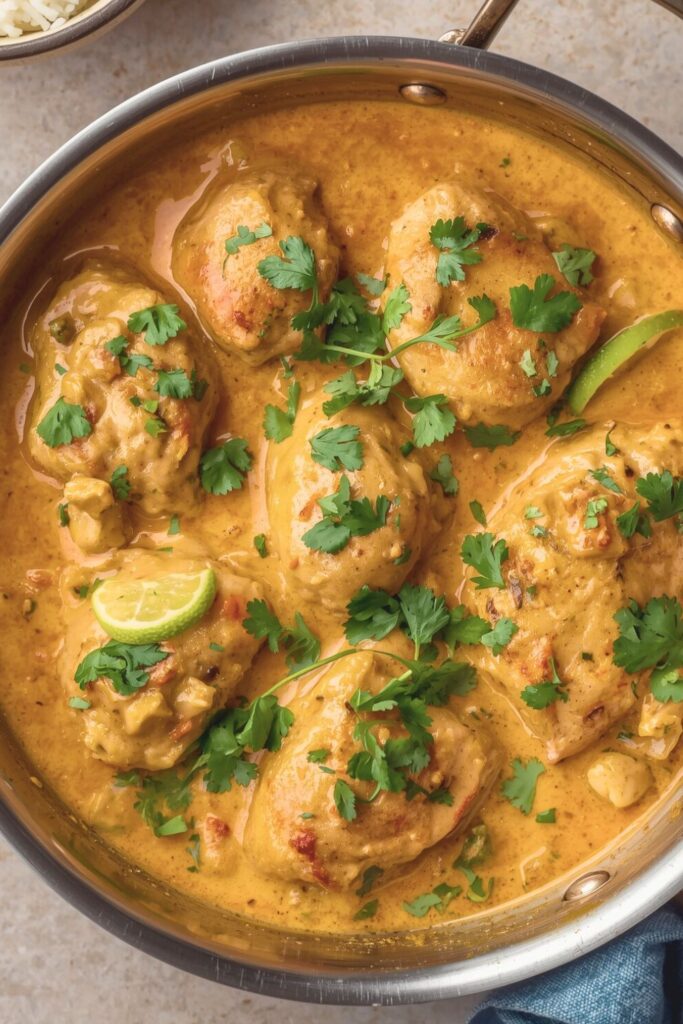
Traditional curries demand hours of simmering and countless ingredients you’ll use once then forget in your spice cabinet. This coconut cream chicken curry skillet throws that rulebook out the window.
We’re building complex flavors through smart technique, not endless time. High heat sears create deep flavors fast. Fresh aromatics bloom in hot oil. Coconut cream transforms everything into silky perfection. The result tastes like it simmered all day but happens faster than pizza delivery.
The chicken stays incredibly juicy because we control every step. No dry, overcooked protein here. The vegetables maintain perfect texture, tender but not mushy. Every bite delivers layers of flavor that keep you coming back.
This coconut cream chicken curry skillet works because it respects your time while delivering restaurant quality results. One pan means minimal cleanup. Smart substitutions mean you can make it with what’s already in your kitchen.
Essential Ingredients for Success
The Protein Foundation:
- 2 lbs boneless chicken thighs, bite sized pieces
- 2 tablespoons coconut oil
- 1 teaspoon salt
- 1/2 teaspoon black pepper
Aromatic Base Building:
- 1 large onion, diced
- 4 cloves garlic, minced
- 2-inch piece fresh ginger, grated
- 1 red bell pepper, sliced thin
The Coconut Cream Magic:
- 1 can (14 oz) coconut cream, full fat
- 1/2 cup chicken broth
Spice Blend That Changes Everything:
- 2 teaspoons ground cumin
- 2 teaspoons ground coriander
- 1 teaspoon turmeric
- 1 teaspoon smoked paprika
- 1/2 teaspoon cayenne pepper
- 1 teaspoon garam masala
Fresh Finishing Elements:
- 2 cups baby spinach
- 2 tablespoons fresh lime juice
- 1/3 cup fresh cilantro, chopped
- Cooked jasmine rice for serving
Smart Swaps That Actually Work
Protein Alternatives: Chicken breasts work but cook faster, watch them carefully. Shrimp cooks in half the time and tastes amazing. Firm tofu needs good pressing and extra seasoning.
Coconut Cream Options: Full fat coconut milk works but won’t be as rich. Heavy cream plus coconut extract pinch hits perfectly. Light coconut milk disappoints every time, avoid it.
Spice Cabinet Flexibility: Missing coriander? Double the cumin and add fennel seeds. No garam masala? Combine cinnamon, cardamom, and cloves. Fresh ginger beats powdered always, but one teaspoon powder substitutes if needed.
Vegetable Variations: Broccoli, green beans, or snap peas work beautifully. Sweet potatoes need extra cooking time. Zucchini goes in at the end.
Quality matters tremendously with spices. Fresh spices smell vibrant when opened. Dusty, old spices create dusty flavors. If your spices don’t make you want to smell them deeply, replace them.
Step by Step Cooking Guide
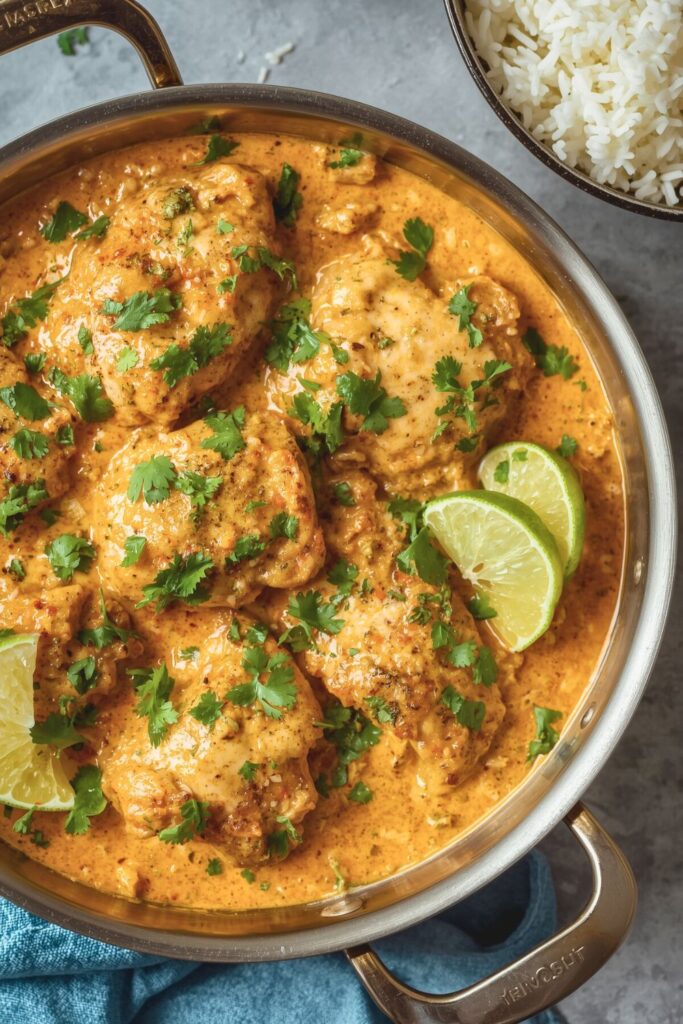
Creating the Perfect Sear
Heat coconut oil in your largest skillet over medium high heat. Season chicken pieces with half the spice blend plus salt and pepper. When oil shimmers, add chicken in single layer, don’t crowd.
Let chicken sear undisturbed for 4 minutes. Resist poking and prodding. That golden crust builds pure flavor. Flip and sear another 3-4 minutes. Remove to plate, it’ll finish cooking in sauce.
Building Aromatic Foundation
Add onion to same skillet without washing. Those browned bits equal liquid gold. Cook until golden and soft, about 5 minutes. Scrape up every precious bit while stirring.
Add garlic and ginger, stirring constantly for 30 seconds until fragrant. Add remaining spices and stir vigorously for 30 seconds. Spices should smell incredible and coat everything evenly.
The Coconut Cream Transformation
Pour coconut cream into skillet, it’ll sizzle and bubble dramatically. Stir everything together, scraping stubborn bits from bottom. Add chicken broth and bell pepper. Bring to gentle simmer.
Return chicken plus accumulated juices to pan. Nestle everything into creamy sauce. Simmer 8-10 minutes, stirring occasionally, until chicken cooks through and sauce thickens.
Fresh Elements Finish
Stir in spinach, it wilts instantly. Add lime juice and half the cilantro. Taste and adjust seasoning. Need more salt? Add it. Want heat? Hot sauce works perfectly. More brightness? Extra lime juice.
Common Mistakes and Easy Fixes
Coconut cream separates if heated too aggressively. Keep heat at gentle simmer, never rolling boil. If it breaks, vigorous stirring usually fixes it.
Overcooked chicken kills joy. Dark meat forgives better than white meat. Thighs stay juicy even with slight overcooking.
Bland curry means your spices need replacing or blooming longer. Fresh spices make incredible difference.
The Science Behind Perfect Curry
Understanding Flavor Development
Searing chicken creates Maillard reactions, those golden surfaces contain concentrated flavor compounds impossible to achieve otherwise. Never skip this step, even when rushed.
Blooming spices in fat releases aromatic compounds locked in dry spices. That 30-second sizzle transforms individual flavors into harmonious, complex base that permeates everything.
Coconut cream’s fat structure makes it more stable than dairy cream. It handles higher heat and acidic ingredients without curdling. Natural sweetness balances warm spices perfectly.
Fresh Elements Balance
Adding bright elements at the end, spinach, lime, cilantro, cuts through richness and adds complexity. Each bite stays interesting instead of monotonous.
Equipment That Makes a Difference
Cast iron holds heat beautifully and gives superior searing. Stainless steel works excellently and won’t react with acids. Non stick works but won’t develop same flavor depth.
Wooden spoons won’t scratch pans and stay gentle enough not to break chicken pieces during cooking.
Restaurant Quality Presentation
Plating Like a Pro
Roughly chop reserved cilantro, don’t mince it into dust. Scatter over finished dish with intention and style.
Lime wedges aren’t just pretty, they let everyone adjust brightness personally. Some love citrus punch, others prefer subtlety.
Create wells in rice portions and nestle curry inside. Looks intentional and elegant while rice absorbs incredible flavors.
Perfect Flavor Pairings
Naan bread excels at sopping sauce. Basmati rice stays traditional and lovely. Cauliflower rice works for low carb versions and absorbs flavors beautifully.
Crisp Riesling or Gewürztraminer handles spices perfectly. Beer lovers should grab citrus noted options, wheat beer or Belgian witbier work wonderfully.
Advanced Variations of Your Coconut Cream Chicken Curry Skillet
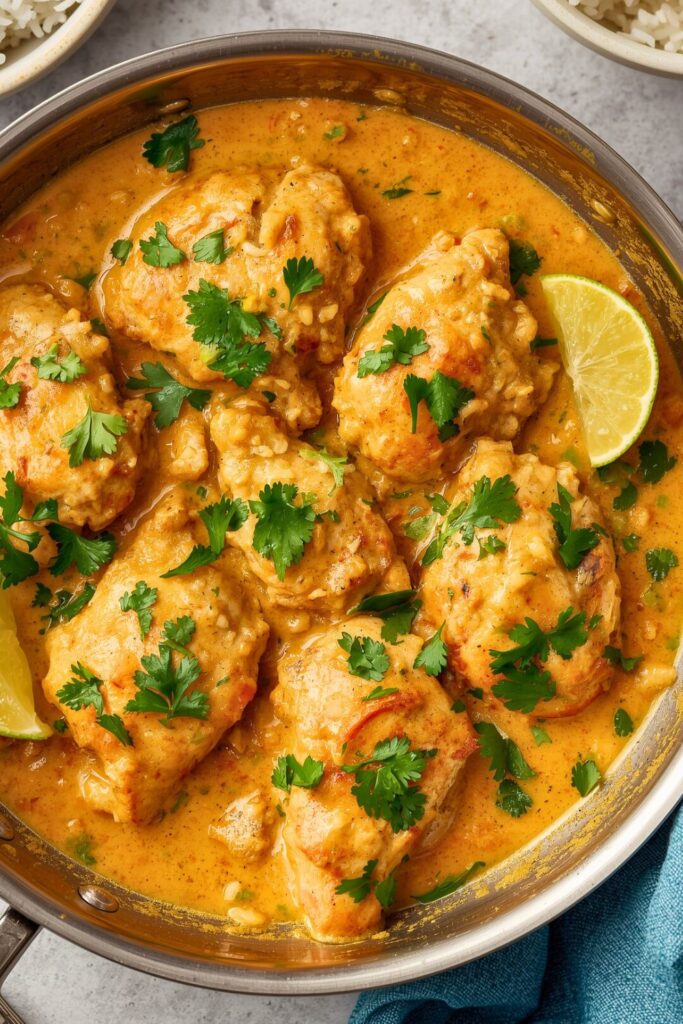
Seasonal Adaptations
Summer versions shine with zucchini, yellow squash, and fresh corn, creating a light and vibrant curry perfect for warm evenings. Winter calls for sweet potatoes, butternut squash, or hearty root vegetables that bring deep, comforting flavors to the dish. Spring demands asparagus, peas, and fresh herbs, adding brightness, freshness, and a burst of seasonal color.
Protein Swaps That Excel
Lamb creates richness that pairs beautifully with coconut cream, giving the curry an earthy, indulgent depth. Fish needs gentle handling and shorter cooking times, delivering a delicate, flaky contrast to the creamy sauce. Chickpeas make excellent vegetarian versions, absorbing the flavors beautifully while keeping the dish hearty and satisfying.
Heat Level Adjustments
Mild versions skip cayenne and use sweet paprika, keeping the dish kid friendly while still flavorful. Medium heat adds jalapeños with seeds removed, giving just the right amount of warmth without overwhelming the palate. Serious heat lovers add Thai chilies or extra cayenne, bringing fiery intensity that elevates the curry’s bold personality.
Storage and Reheating
Make Ahead Magic
This coconut cream chicken curry skillet improves overnight. Flavors meld and deepen significantly. Store covered in refrigerator up to 4 days.
Reheat gently over medium low heat, stirring occasionally. Add coconut milk splash if too thick. Fresh lime juice and cilantro brighten reheated portions.
Freezing Success
Freezes beautifully up to 3 months. Cool completely before freezing. Leave inch space for expansion. Thaw overnight in refrigerator.
Texture changes slightly after freezing. Stir in fresh coconut cream tablespoon to restore silky richness.
Mastering Your Curry Journey
This coconut cream chicken curry skillet succeeds because it respects your schedule while delivering exceptional flavors. Twenty five minutes start to finish. One pan cleanup. Ingredients available everywhere.
The technique unlocks countless other dishes. Master spice blooming and sauce building here, and you’ve gained skills for impressive curry style creations that make people think you’re culinary genius.
Trust your taste buds. Adjust seasonings confidently. Remember that best dishes come from cooks unafraid to adapt based on what they’re experiencing.
This coconut cream chicken curry skillet proves that incredible meals don’t require complicated techniques or exotic ingredients. Sometimes the most satisfying dishes come from simple methods executed with attention and care.
Coconut Cream Chicken Curry Skillet: FAQs
Can I prepare this coconut cream chicken curry skillet ahead of time?
Absolutely, it actually improves with time. Flavors meld and develop more complexity overnight. Store covered in refrigerator up to 4 days. Reheat gently over medium low heat, stirring occasionally. Add coconut milk splash if thickened too much. Fresh lime juice and cilantro after reheating brighten everything up.
What’s the best freezing method for this curry?
This coconut cream chicken curry skillet freezes perfectly for 3 months. Cool completely before transferring to freezer containers. Leave inch headspace for expansion. Thaw overnight in refrigerator, then reheat gently on stovetop. Texture might change slightly, stir in fresh coconut cream tablespoon to restore silky richness.
My coconut cream chicken curry skillet turned too spicy, help?
Don’t panic, several rescue techniques work. Stir in more coconut cream or Greek yogurt dollop to cool things down. Sugar or honey teaspoon balances excessive heat. Adding vegetables like bell peppers or diced potatoes bulks up dish and dilutes spice level. Start with less cayenne next time and build up.
Can chicken breasts replace thighs successfully?
Yes, but adjust cooking technique carefully. Breasts cook faster and dry out easily. Cut into smaller, uniform pieces and reduce simmering time to 5-6 minutes. Monitor closely with meat thermometer, 165°F internal temperature is target. Thighs forgive mistakes better and stay juicier, which makes them ideal choice.
Which vegetables work best in this recipe?
Bell peppers add color and sweet crunch, but options abound. Broccoli florets, snap peas, or green beans work wonderfully. Root vegetables like sweet potatoes need head start, add with onions for proper softening time. Zucchini and yellow squash suit summer versions. Harder vegetables need more cooking time while delicate ones like spinach go in last.

Swiftly Captions by Tina Smith — Quick, flavorful food recipes made simple, bringing fresh inspiration to your kitchen every day
